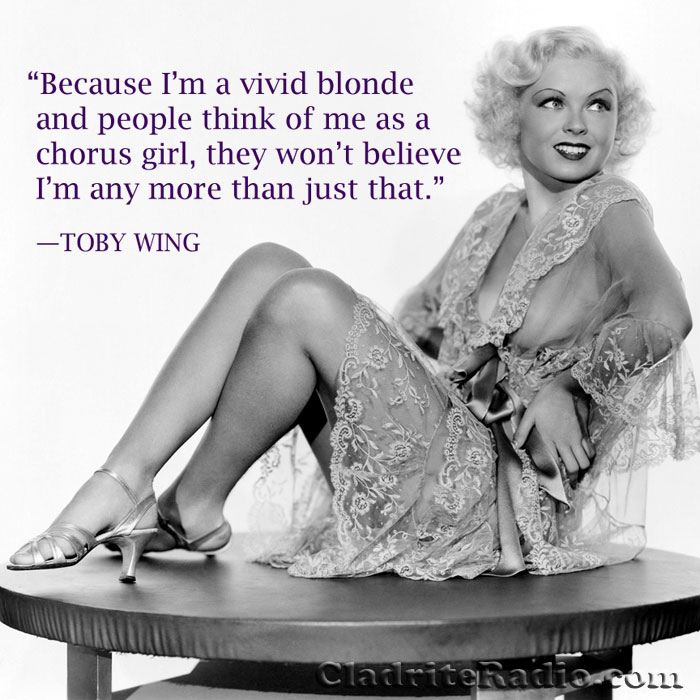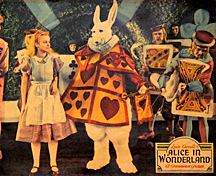Actress Toby Wing was born Martha Virginia Wing in Amelia Court House, Virginia, 101 years ago today. She was never a star, but she’s remembered fondly by old-movie buffs for her many memorable small parts and cameos. Here are 10 TW Did-You-Knows:
- She took her screen name Toby after the nickname her father had given a horse.
- After serving in World War I, Wing’s father moved to Hollywood to serve an assistant director and mid-level executive at Paramount Studios. He also served in World War II and was for a time was a prisoner of the Japanese in the Philippines; he survived the infamous Bataan Death March.
- Her sister Madison was also a film actress, under the name Pat Wing. Madison appeared in 32 pictures between 1923 and 1937, though she generally went uncredited.
- As a child, Wing took a few small parts in silent pictures before refocusing on her studies at her parents’ insistence.
- She was romantically paired with an impressive roster of prominent men—Maurice Chevalier, Alfred Vanderbilt, Franklin Roosevelt Jr., Jackie Coogan (Wing and Coogan were engaged for a time) and Pinky Tomlin among them.
- Wing’s best-remembered role was in the 1933 Warner Brothers musical 42nd Street, where she was the “Young and Healthy” girl opposite crooner Dick Powell.
- Wing’s career alternated between sizable roles and cameos (with the latter being prevalent). Mostly, she served (and ably so) as eye candy, though she occasionally scored more prominent roles when she appeared in Poverty Row pictures.
- After being engaged—but not wed—to a long string of men, Wing married prominent aviator Dick Merrill, who was 22 years her senior. Many were skeptical of the union, but the pair enjoyed wedded bliss until Merrill’s death in 1982.
- Wing appeared on Broadway in Cole Porter‘s You Never Know, a troubled production that lasted just 73 performances; Wing appeared in the production alongside Clifton Webb, Libby Holman and Lupe Velez.
- Wing and Merrill settled in Miami Beach, Florida, where she dabbled in real estate and taught Sunday School at All Souls’ Episcopal Church into her 80s.
Happy birthday, Toby Wing, wherever you may be!



